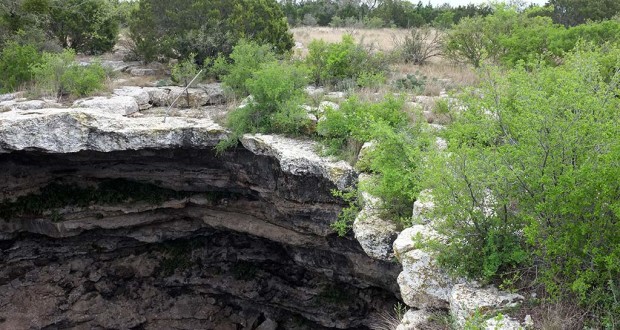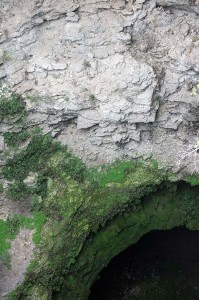The big attraction isn’t the spacious cavern but who lives there – more than 3 million Mexican free-tailed bats that migrate to Devil’s Sinkhole and other Central Texas caves each spring.
Every night at dusk, from May through early fall, the bats pour from the cave in a torrential whirlwind before streaming off in the night sky to hunt moths and other insects as far a 70 miles away.The park is not open to the general public. To get in you have to make a reservation with the Devil’s Sinkhole Society, which runs a variety of day and evening tours of the park and its bats. (For reservations, stop by the Visitors Center in Rock Springs, call 830-683-2287 or email tours@devilssinkhole.org.)
Kickapoo Cavern State Park down the road has a much smaller bat colony but offers a more intimate setting.
From above, the sinkhole is a broad gap in the ground surrounded by limestone ledges. A viewing platform lets you peer down into the cavern. The sides of the shaft are covered with sculpted limestone and thick with verdant moss and vegetation, and you can see down to the initial floor of the cavern if the light is right.
The cavern itself is not accessible without a permit and a long rope and is generally reserved for research projects. Because the deepest part of the cave is below the water table, it has isolated underground ponds that are home two two species of endangered crustaceans.
The park overall covers about 1,800 acres and has several miles of bird and hiking trails. It seems especially thick with wild Rio Grande Turkeys, which you can often hear gobbling in the brush behind the sinkhole.


You must be logged in to post a comment.